Keith Thomson's Blog, page 7
October 4, 2014
Microcars

More astonishing than the fact that Peel P 50s are actual street-legal automobiles, as opposed to go-karts, is that they were mass-produced. The Isle of Man's Peel Engineering Company manufactured them from 1962 to 1965, marketing them as city cars able to accommodate "one adult and a shopping bag." At 54 inches long, 39 wide and 39 tall, the Peel P 50 ranks as the smallest production car of all time. But it's hardly an outlier, particularly among cars produced in the late 1950s and early ’60s. Below are some photos of Peels and other microcars, with links to more legitimate sources of information.

130 Lbs (empty), Peel 50s could touch 40 mph (going downhill helped)

The Peel P 50 and Peel's relatively large Trident
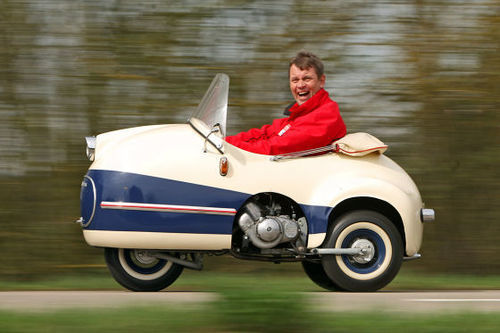
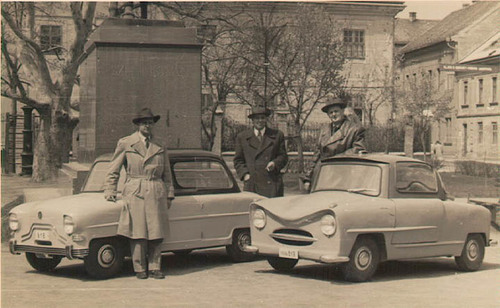
Hungarian micros Alba Regia and Balaton
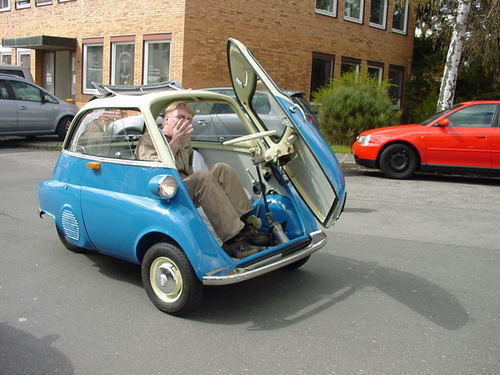
BMW's Isetta, the top-selling single-cylinder car in the world—161,728 units sold in '55. Still around, they get 90 mpg.

Messerschmitt Kabinenroller (yes, the aircraft company, prohibited from making planes post-WW2…

Subaru 360 a.k.a. the Ladybug


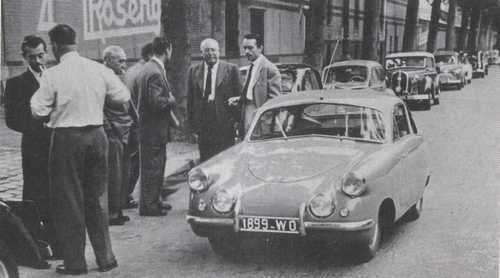
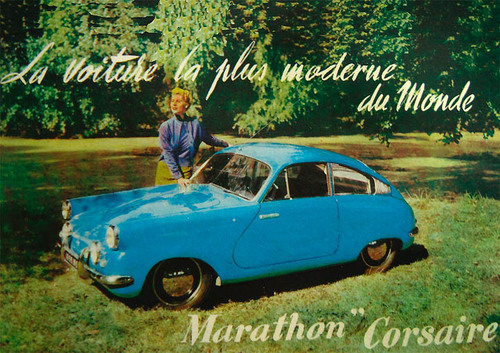
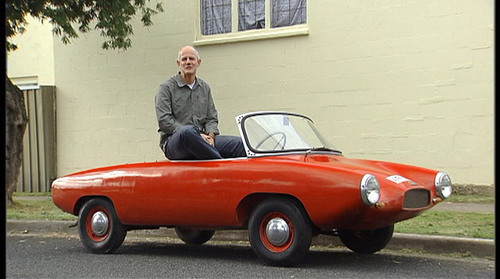
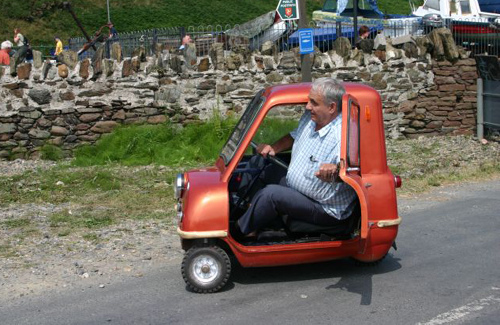
One more Peel P 50
For more info, or to see microcars, check out the Microcar Museum in Madison, GA:
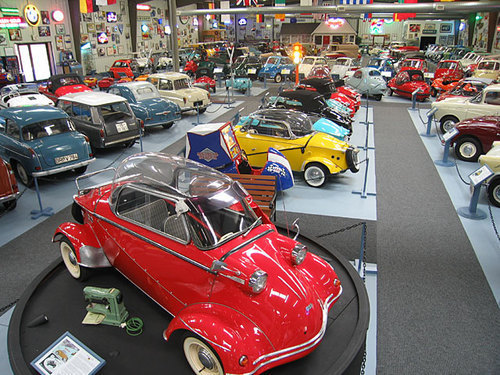
Related Links: Story of a man who bought 200 cars at auction, mostly on eBay

October 2, 2014
ISIS vs. Warthog
Our story begins with US A-10 Warthogs over Syria.

One is sent to check out an ISIS artillery unit just over the Syrian border, in Iraq.

The artillery unit a wide variety of artillery including a massive Russian M-46 M1954, a 130-mm artillery piece manufactured in the Soviet Union in the 1950s. Probably ISIS borrowed the gun from the Syrian government without asking. It can turn a tank to shrapnel from 27 km away.


The Warthog gets off the first shot…

…a GBU-12 Paveway II, an 11-foot-long, 500-pound general purpose aerial bomb with a nose-mounted laser seeker and fins for guidance.

What happens? Let's go to the videotape…
Related link: Birdwatching (pix of a few hundred of my favorite planes)
September 24, 2014
The Flying Saucer Seen in Houston: in Fact a Flying Saucer
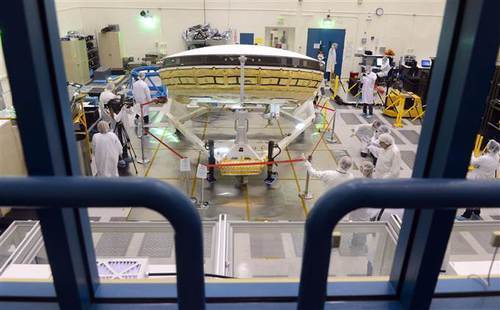
There have been a ton of reports of flying saucers over Houston, which in and of itself is no news. The news is that many of the reports are accurate. Houston-based NASA has built a supersonic flying saucer known as a Low Density Supersonic Decelerator, part of an effort to get larger payloads—as heavy as 100 tons—to Mars in support of human missions.
The Low Density Supersonic Decelerator first flew on June 28 at the Navy's Pacific Missile Range Facility in Kauai, Hawaii.

A high altitude balloon raised it, releasing it at 120,000 feet.

At that point the saucer fired its own rocket traveling it higher still, at about Mach 3.8.
![[illustration]](https://i.gr-assets.com/images/S/compressed.photo.goodreads.com/hostedimages/1411609394i/11255362.jpg)
[illustration]
For more information, see NASA's site. IF you think NASA is just part of the government conspiracy to cover up the existence of aliens, TexasUFOsightings.com.
Related: My True Area 51 UFO Story
September 21, 2014
Personal Submarine Buying Guide
Shopping for personal submersibles for yourself or as a gift for Author's Day (more on that holiday in a moment)? Good call! Innespace's Bionic Dolphin is capable of 20 mph while submerged and can reach 50 on the surface. It can also leap out of the water like a dolphin, up to 18 feet. A potential bummer: If you go more than a few feet deep, it stalls. Also available in killer whale and shark (see below). At $50,000, it is, as you will see, a relative bargain.

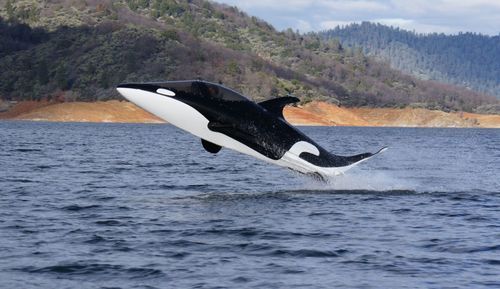
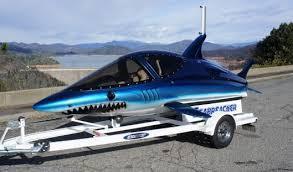
DeepFlight's Super Falcon Mark II has a pressurized cockpit that balances out atmospheric pressure as you go deeper, as deep as 1,600 feet. It cruises at 2-6 knots—typical in this class—with room for two. But the Mariana Trenches of the world are out, with a depth limit of just 400 feet. Which is why it's only $1.7 million.

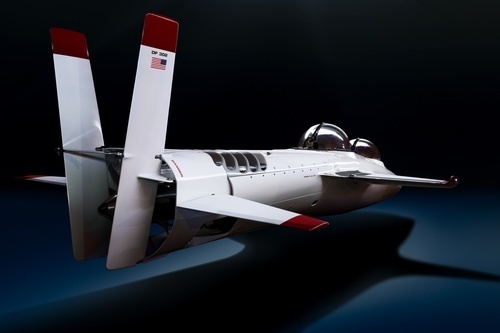
DeepFlight is also taking orders on two more models. Note: They probably will not be ready by Author's Day (in the event you don't know, it's the holiday on which readers show their appreciation for writers), but here are the pix anyway:
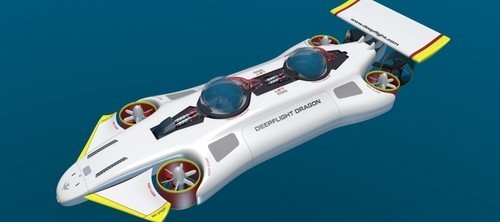
DeepFlight Dragon
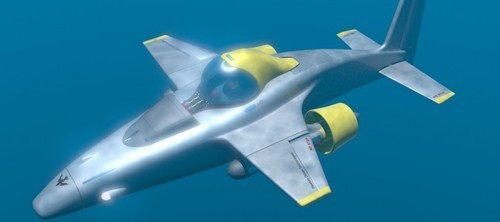
DeepFight Black Hawk
The Scubster, a French made pedal-powered sub, will be significantly cheaper than the previous models (price tbd). Things is, you have to bring your own air supply. Not sure what advantage the guy in the Scubster has over the guy out of it.
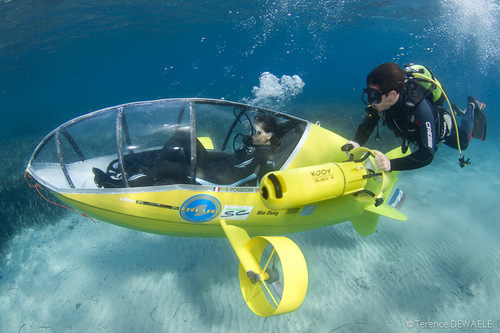
Hammacher Schlemmer's Personal Submarine. Like the DeepFlight but slower, not as cool-looking and about $300,000 more expensive. But if you are a Frequent H-S catalog customer, your order may qualify you for a free Talking Chewie (below).
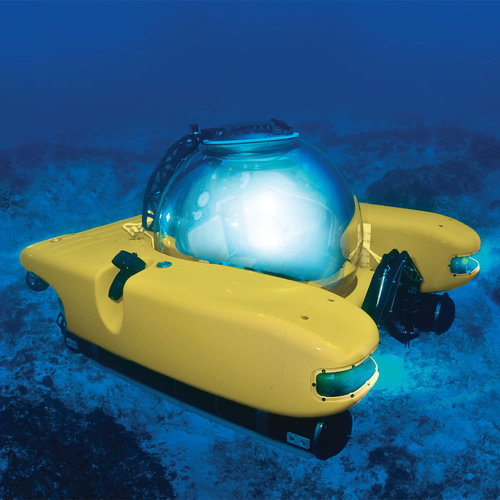

The Triton 36,000/3's vertical configuration permits a high rate of descent and ascent. The deepest spot in the ocean is 35,800. With this sub, you're there in two hours. Its sticker price is $25 million…

…which makes the Triton 3300/3, a bargain at $3 million. It can take you and two friends down 3,300 feet for as long as 10 hours.
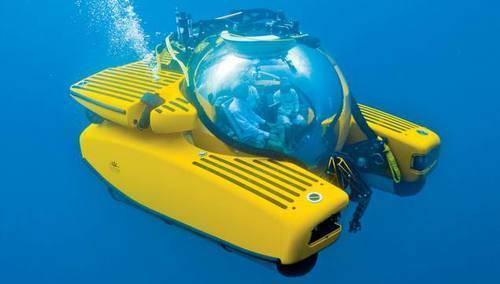
There's also an economy class Triton, the 1000/2 ($970,000).
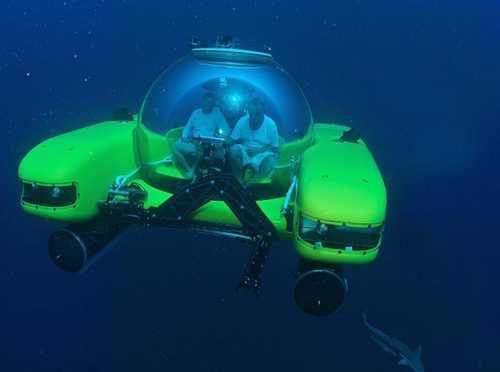
Seamagine's Ocean Pearl and the C-Quester 3 are the Hyundais and Kia of personal subs, the former a two-person sub with a depth rating of 150m-1000m for just $900,000, the latter will get three of you down about 330 feet for only $500,000.
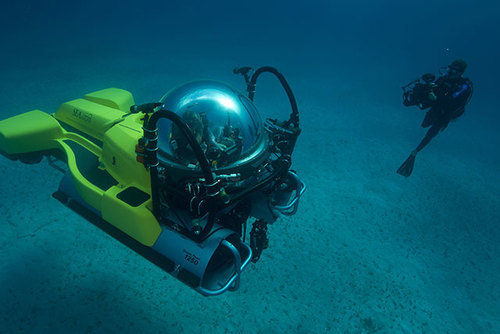

C-Quester 3
Both are capable and reliable, and would make awesome gifts for Author's Day (Saturday, November 1, by the way).
Related Link: 7 Grams of Lead
September 18, 2014
How to Keep Your Car from Getting Towed

Getting towed for a parking violation is a massive waste of time and money. This week in London, a driver came up with an ingenious solution: Climb onto the tow truck, get in your car, put it in reverse and back away. And here's the best part: This technique is not illegal, albeit probably because nobody thought to outlaw it. London police determined that it's a civil matter, i.e. the private towing company has to deal with it.

Related Link: 7 Grams of Lead
September 16, 2014
The One-Winged Eagle

This is a McDonnell Douglas F-15 Eagle, a twin-engine, all-weather tactical fighter that is, to say the least, durable. During a 1983 training exercise in Israel, an Israeli Air Force F-15 collided midair with an A-4. The A-4 burst into a fireball instantly. The F-15 flew away with one wing. But could it keep flying with one wing? Let alone land? Physics says no. But truth is stranger than physics.

Here is a History Channel clip with pilot Zivi Nedivi's account:
In the subsequent investigation, McDonnell Douglas officials believed the plane to have been involved in a taxiing accident. A flight with just one wing was impossible, they said.

Then they were shown video. The official conclusion: The damaged Eagle had been able to return to base and land on account of the lift generated by both its engine intakes and its fuselage.
They put on a new wing and the Eagle returned to work.
Related Links: The B-52 that Lost its Tail; Amazing F/A-18 Crash;
Unbelievable Glider Landing ; Once a Spy
September 11, 2014
Formerly the World’s Largest Land Vehicles
In the market for a transporter to get your rocket or space shuttle to the launch pad? Meet "Hans" and "Franz," the crawlers delivered to NASA in 1965 by Marion Power Shovel Company of Marion, Ohio, for $14 million apiece.

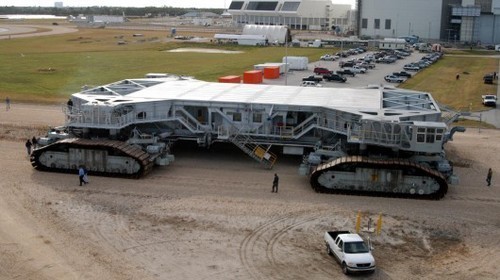
Immediately they ranked as the largest land vehicles on the planet—each is 131 feet long by 113 feet wide, stands 26 feet high and weighs 2,750 tons. The lost the title in 1978 to the 13,500-ton Bagger 288 excavator.
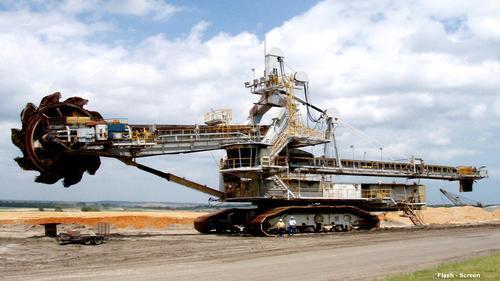
Hans and Franz still in good condition, each with only about 3,400 miles. Despite sixteen traction motors powered by four thousand kilowatt generators driven by a pair of 2,050 kW V16 Alco diesel engines, they only go about two miles per hour, and get 42 feet per gallon of diesel fuel (125.7 gallons per mile), or 125.7 gallons per mile. Not great, but try carrying a Saturn V on the top of your Prius.



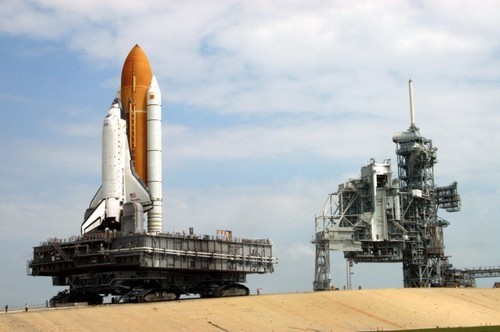
Related Link: Rockets, UFOs and Sky Candy
September 9, 2014
The World’s Most Valuable Coin?
The 1933 Double Eagle sold at auction for a record $7,590,020 in 2002. But is it the world's most valuable coin?

How about this coin, also American, minted in 2011?


It's made of nothing special, metal-wise, just some copper and nickel. On the front is a red X. The back bears a date: MAY 1, 2011 . That's U.S. time, not incidentally, as opposed to Abbottabad time. These limited-edition coins were given to CIA officers who were instrumental in finding Osama bin Laden. Priceless?
Related link: Once a Spy
September 4, 2014
Rapid Rabbit
Meet the Rapid Rabbit, the SR-71 Blackbird so known because of the Playboy Magazine bunny logos on her rudders. And because she was rapid—capable of 2,200 miles per hour or so.


The Rapid Rabbit was one of four Blackbird casualties, lost on in 1972 while attempting to land at Kadena Air Force Base during extreme crosswinds. Fortunately the tail—as well as the pilots—survived.
Related Links: Blackbird
The Coolest Plane That Never Was (1980s proposed Blackbird replacement)
How I Stole $12 Million in Diamonds and You Can Too

1. Combination dial 2. Keyed lock 3. Seismic sensor 4. Locked steel grate 5. Magnetic sensor 6. External security cam; 7. Keypad for disarming sensors 8. Light sensor 9. Internal security cam 10. Heat/motion sensor
De Beers, which controls more than half of the world’s diamond mines, has a PR department that gives out too much information for the company’s good. On the De Beers Web site’s media page, I learned about a Brinks truck delivery of two cases of rough, unpolished gems to a vault in a big city diamond center.
I decided to use that vault as a model for the fictitious one the characters in my new novel would rob. The question was this: How would they do it?
As it happens, the vault manufacturer’s site boasted of their big sale to the diamond center. They also detailed the system’s cool new heist-proof tech (see illustration below):
1. Combination dial 2. Keyed lock 3. Seismic sensor 4. Locked steel grate 5. Magnetic sensor 6. External security cam; 7. Keypad for disarming sensors 8. Light sensor 9. Internal security cam 10. Heat/motion sensor
Under cover as Examiner reporter writing a story about vaults, I gained admission to the diamond center, and then—two floors below ground to a windowless antechamber the size of a typical kitchen—the four-ton steel vault door. The combination wheel had numbers from 0 to 99. To enter the vault, I would need to dial four numbers, meaning 100 million possible combinations. But by using the right subminiature video camera, I might remotely view the vault being opened.
From my previous spy novel research, I owned five or six such cameras; the most I ever spent on one was $30 (eBay). I stuck one of them on the wall opposite the vault. At seven the next morning, a guard ambled up the vault door and dialed the combination. I watched on my iPhone in the room I was staying in under alias at a hostel on the other side of town.
I decided to try breaking in. There’s just no substitute for first-person research to gather the sights, smells, truth that is stranger than fiction, and so forth. If caught, I’d go with a gonzo-journo cover.
The break-in would need to be at night, after the guards locked down the vault, cleared out of the building, and sent the steel roll-gates slamming down and sealing off all entrances to the vault. During the night, no one patrolled the interior. The diamond center trusted their ten layers of security.
I needed to figure out how to bypass all of those layers. In the course of researching other crime novels, I’ve learned that each time someone invents a security system, someone else finds a way to vanquish it. Take the near-indestructible U-shaped metal Kryptonite lock, a staple of bicycle rack security for fifty years. One day in 2004, a guy in South Dakota figured out that by wedging in the somewhat malleable plastic barrel of a Bic pen, anybody could pop the lock. Thanks to the Web, the next day his discovery was known all over the world. More recently, a home security expert took to the Internet and boasted that he could thwart most burglar alarm systems by finding remote controls from other types of systems—a video game that operated on the same radio frequency, for instance.
A few nights later, I attempted to covertly enter at the rear of the diamond center building, via the courtyard that abuts it.
Using a coil of lightweight climbing rope tipped by a miniature titanium grapnel with retractable flukes, I reached a small terrace on the second floor. A heat-sensing infrared detector monitored the terrace. From my knapsack, I produced a homemade polyester shield; I’d read that the low thermal conductivity of polyester prevents body heat from reaching the heat sensor. It seemed to work now. No alarms—at least that I could hear.
Next I disabled a garden-variety alarm sensor on one of the balcony’s windows—so simple a task that it’s not worth relating. I climbed through the window into a vanilla executive office. Still no alarms. The entire building was silent.
Adrenaline overriding all of my emotions, I proceeded across the hall and then descended the stairs to the antechamber. All the lights were on. Good. I would need them to see, as I’d totally overlooked night vision goggles. I covered the security cameras with garbage bags, then, to cover my tracks, removed my own subminiature camera I’d placed on the wall during my first visit.
The vault’s most significant obstacle was a pair of abutting metal plates, one on the vault door itself and one on the wall to the door’s left. When they’re armed, the two plates form a magnetic field. If I were to break the magnetic field—by so much as cracking the door—I would trigger the alarm. From my knapsack I took a slab of aluminum and, using industrial-strength double-sided tape, stuck it on the plates that regulated the magnetic field, then unscrewed their bolts. I’d read about this on a bank security Web forum. What I was trying to do here is loosen the magnetic plates so that I could pivot them out of my way. I managed to do it, then taped the plates to the antechamber wall, keeping the magnetic field intact. Thus I was able to unlock the vault door—that is, once I correctly entered the combination and deployed the key made from a still photo taken from my subminicam feed.
Before swinging the door open, I flipped off the lights so as not to trip the light detector inside the vault. Once inside, I had to contend with a heat sensor, against which I couldn’t use the polyester shield because I would need both hands free. Turns out if this sort of sensor is coated with a transparent, oily mist, it’s insulated from fluctuations in the room’s temperature, chiefly 98.6-degree me entering. Pam Cooking Spray did the job.
That got me to the inbound and outbound cables powering the remaining security systems and returning their data. I linked the two cables using a precut four-inch length of copper wire, creating a bridge that rerouted the incoming pulse to the outbound wire before the signal reached the sensors, meaning the security company monitoring the vault would get no electronic news tonight.

Resisting the urge to look around, I darted straightaway to the storage compartments, drilled open the De Beers boxes, and tipped the two cases of raw diamonds into my knapsack. As the gems rained against the fabric, I considered for a moment that I might be dreaming. Could I possibly have gotten this far? I hadn’t figured I’d even on making into the vault.
I planned to return the diamonds to the diamond center. Until, back in my room at the hostel, I took a handful out of the knapsack and was enchanted by the way they transformed the harsh light of the overhead fluorescent tubes into the full spectrum.
Unfortunately the one thing you can’t find on the Web is a good fence.



